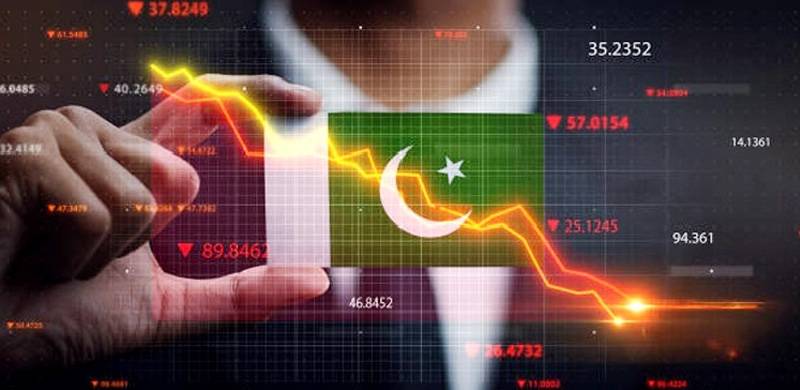
By: Aymen Alam
Pakistan, a nation marked by rich cultural heritage and diverse landscapes, has also weathered its fair share of economic challenges. From structural imbalances to external shocks, the country has grappled with a myriad of issues that have shaped its economic landscape up until 2024.
The economic crisis in Pakistan has roots in a complex interplay of factors. One of the longstanding issues has been the fiscal deficit, which has consistently strained the government’s finances. Coupled with this, a heavy reliance on imports, especially of essential commodities like oil, has led to a burgeoning trade deficit. Additionally, political instability and security concerns have deterred foreign investment, exacerbating economic woes. The COVID-19 pandemic delivered a severe blow to Pakistan’s economy, exacerbating existing vulnerabilities.
The lockdown measures implemented to curb the spread of the virus disrupted supply chains, halted industrial activity, and led to widespread unemployment. The service sector, a significant contributor to GDP, witnessed a sharp decline as tourism dwindled and consumer spending plummeted.
To alleviate pressure on the external account, Pakistan resorted to currency devaluation, which, while boosting exports, also fueled inflationary pressures. Rising prices eroded purchasing power, particularly affecting low income households. The challenge of taming inflation while stimulating economic growth has been a delicate balancing act for policymakers.
Pakistan’s debt burden has been a persistent concern, with external debt surpassing $115 billion by 2024.
Struggling to meet its debt obligations, Pakistan sought assistance from the International Monetary Fund (IMF). However, IMF bailouts often come with stringent conditions, including austerity measures and structural reforms, which can further strain the economy and exacerbate social inequalities.
Addressing the root causes of the economic crisis requires comprehensive structural reforms. Efforts to broaden the tax base, improve governance, and enhance transparency are crucial steps towards fiscal sustainability.
Moreover, fostering economic diversification, particularly in sectors such as agriculture and technology, can reduce dependence on imports and create new avenues for growth.
Geopolitical tensions, particularly with neighboring India, have added another layer of complexity to Pakistan’s economic woes. Escalating conflicts and border skirmishes not only disrupt trade relations but also deter foreign investors. Moreover, regional instability, such as the situation in Afghanistan, poses additional challenges for Pakistan’s security and economic stability.
Navigating out of the economic crisis requires a concerted effort from both the government and the private sector. Investing in human capital through education and healthcare can enhance productivity and competitiveness. Furthermore, fostering an enabling environment for entrepreneurship and innovation can unlock new sources of economic growth.
In conclusion, Pakistan’s journey through economic crisis till 2024 has been fraught with challenges, but it also presents opportunities for reform and revitalization. By implementing prudent policies, fostering inclusive growth, and strengthening regional cooperation, Pakistan can overcome its economic hurdles and embark on a path towards sustainable development. As Henry Paulson said;
“In the crucible of economic challenge, the true character of a nation is revealed, as it rises above adversity with resilience and resourcefulness.
(Writer is a student of BAHRIA UNIVERSITY ISLAMABAD CAMPUS & can be reached at: [email protected])


